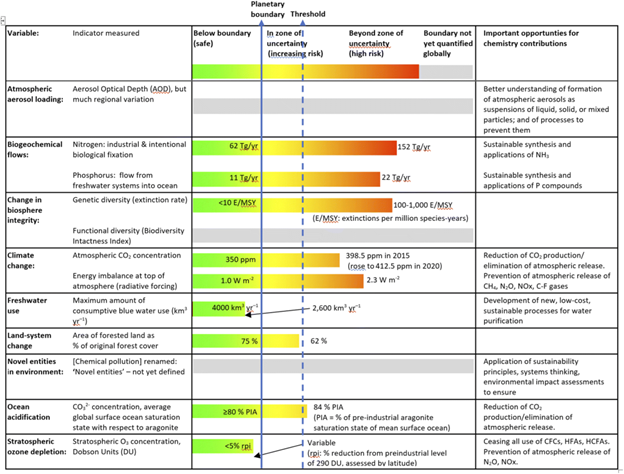
Chemistry's extraordinary success as the science of transformation of matter, bringing huge benefits to humanity, has been central to the expanding quantity and diversity of artefacts generated by human beings. The production of anthropogenic mass (global total dry mass of material contained in inanimate solid objects made by humanity) doubled every 20 years since 1900, in 2020 reaching 30Gt per year and totalling c. 1.1 trillion tonnes present on the planet.1 This accumulated amount equalled the dry weight of total biomass on Earth for the first time and, on current trends, total anthropogenic mass will be triple the dry weight of biomass by 2040. Concomitantly, the global chemical industry's production capacity (excluding pharmaceuticals) almost doubled between 2000 and 2017, from about 1.2 to 2.3 billion tonnes.
However, there has been mounting environmental cost, including degradation of global habitat quality and loss of planetary ecosystem stability. Global atmospheric CO2 concentrations reached their highest historic level of 421.37 ppm in May 2022. They are likely to drive global warming since pre-industrial times above the 1.5 °C safe limit in the 2020s. At the same time, the majority of the 500 main chemicals on the market have been judged unsustainable in terms of their environmental impact.4
This is a wake-up call for all humanity to attend to the unfolding crisis.